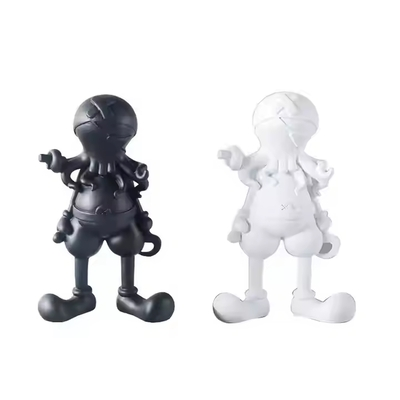Artful creation Classic Collector Hero Model

Discover the rewarding craft of custom action figures and grow your creative voice!
More than accumulation, the craft centers on expressing individuality through sculpted figures.
From veteran customizers to budding creators, learn the craft and commercial tactics to sell bespoke figures.
We cover choosing base bodies, advanced painting, sculpting, and finishing for market-ready custom figures.
- Commence by outlining the figure’s story, target buyers, and the production approach.
- Acquire base bodies with solid articulation and easy modification points for conversions.
- Advance paint techniques like glazing, edge highlights, and micro-detailing for collectible standards.
- Experiment with modular accessories and interchangeable parts that increase collector interest.
- Upload high-quality photos and listings, offer limited runs, and engage communities to monetize creations.

Craft Your Own Action Figures: A Step-by-Step Guide
Begin an exciting creative path to design custom figures that resonate with collectors and retail buyers.
- Start planning with character traits and visual references to produce marketable designs.
- Acquire essentials like putty, hobby knives, primer, acrylics, and clear coats for finishing.
- Work in stages adding base forms, refining details, and correcting proportions as you go.
- Use glazing, drybrushing, and edge highlights to create richness and realism in paintwork.
Figure Modding Essentials: Tricks for One-of-a-Kind Customs
Thinking of leveling up? Modify figures to create signature pieces that attract collector interest.
Pick a base that supports the changes you envision and sketch modifications to maintain proportions.
* **Sculpting:** Apply modeling putty in layers, refining detail to ensure strong, collectible parts.
* **Painting:** Paint with patience—prime, glaze, and seal to create How To Make Action Figure photos and sales-ready finishes.
* **Accessories:** {Get creative with found objects and spare parts to craft unique weapons and stands.|Repurpose tiny components and kitbash parts to create distinctive props and display bases.|Combine printed parts, metal bits, and kitbashed pieces for specialty accessories.|Use 3D-printed or scratch-built accessories to increase perceived value and uniqueness.|Craft accessories from small-scale materials or print custom items to enhance desirability.|Invent accessories by converting everyday items into miniature props that pop on shelves.|Design removable and interchangeable accessories to offer collectors customization options.|Produce themed accessory sets that pair with figures to boost bundle sales and interest.|
Figure Production Essentials: Turning Sculpt into Product
Prototypes are refined into production-friendly files, molds are made, and parts are produced at scale.
Molded parts are cleaned, painted, and assembled with precision to meet collector and safety standards.
Successful figures blend imaginative design, meticulous finishing, and reliable manufacturing processes.

Design Principles for Custom Action Figures
Consistent process control, from design to varnish, turns individual customs into reliable saleable items.
Five Tools That Transform Your Customizing Workflow
- A full set of small hobby knives and cutters for controlled sculpting prep.
- Specialized sculpting compounds for repeatable results in small-scale custom features.
- A full paint palette with varied finishes to achieve realistic textures and hues.
- A heavy-duty modeling blade for controlled cuts and repetitive shaping work.
What Makes Up an Action Figure
Delve into the structure and parts that make a figure poseable, durable, and appealing.
The body core is produced in chosen material—hard plastic for structure or softer vinyl for flexibility.
Fit a reliable internal joint system to ensure durability and smooth articulation for collectors.
Distinct props and display bases create complete scenes that increase shopper engagement.
Protective finishes, matte or gloss variants, ensure longevity while enhancing visual presentation.
Finishing Touches: How to Make Custom Figures Shine
Start finishing by addressing imperfections, smoothing joins, and applying a suitable primer coat.
Select palettes that match the character concept and mix paints for depth and saturation control.
Work with fine brushes and incremental layering to create convincing textures and tiny features.
Use appropriate sealant layers to lock in colors and protect painted surfaces during handling and shipping.
Artist Spotlight: Interviews with Leading Figure Sculptors
Explore the creative minds behind standout customs with in-depth interviews and studio tours.

Hobbyist Hub: Unite and Celebrate Figures
Enthusiasts, gather to exhibit rare pieces, compare mods, and connect with fellow customizers.
This is an invitation to unite: share collections, inspire each other, and compete in friendly contests.
- Link up with other collectors for trades, commissions, and cooperative projects.
- Access video guides, workshop notes, and forum tips to refine techniques and display practices.
- Compete in themed challenges to sharpen skills and attract potential buyers and followers.
No matter your level, the custom-figure community offers mentorship, inspiration, and markets for sales.
Picking the Best Producer for Your Figures
Embarking on a quest for the ideal manufacturer can be exciting yet challenging—evaluate reputation, detail level, and material quality.
- Check manufacturer case studies and sample runs to confirm compatibility with your custom goals.

A trusted manufacturer supports scale-up and maintains the high finish collectors expect.